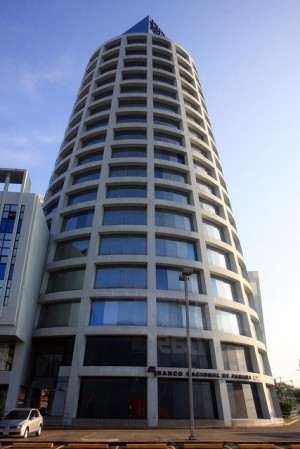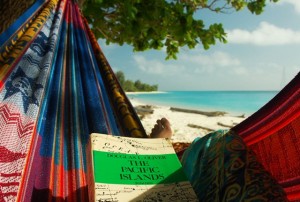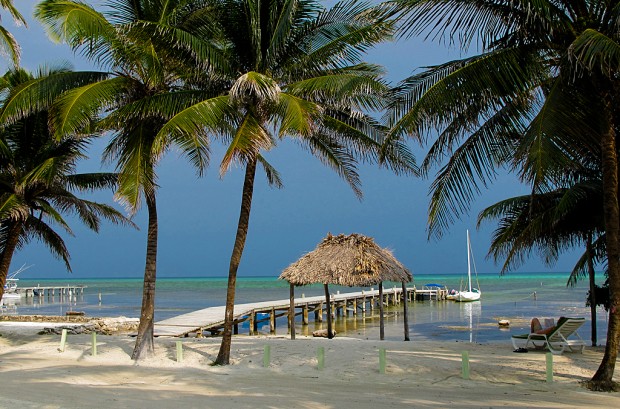
With the fastest growing economy in the Americas, Panama has often been compared to 1970’s Brazil or present day Singapore. And with ongoing projects such as a $5.3 billion expansion of the Panama Canal and a $13.6 billion government investment in infrastructure, this Central American country is not slowing down. Its sophisticated banks and stable economy attract investors worldwide.
In addition, the Panamanian government has a long history of establishing incentives and atmospheres that make investing in this beautiful landscape even more attractive. The list below highlights some of the more significant benefits:
Panama Incentives for Retirees & Expats
Retiree Tourist Visa
The Turista pensionado affords retirees (who must be a minimum of 18 years of age), who can show proof of income, the following benefits:
- Import of household goods (up to $10,000) free of taxes
- Import of a car for personal use every two years
- Property tax exemption on a home that is your only residence
- Discounts between 15-50 percent on restaurants, hotels, entertainment, and professional services
Panama Real Estate Laws
Law 54 – Foreign Investor Protection
This law grants foreign investors and their businesses the same rights and freedoms as Panama natives. They are also granted the right to dispose of their investment profits and repatriate their interest, dividends, and profits.
Article 44 – Private Property
This section of Panama’s constitution guarantees that the rights of property owners are protected for both Panamanians and foreigners alike.
Law 24 – Reforestation Investment
This law provides benefits, including a 25-year income tax exemption, to those who purchase property for the purpose of reforestation.
Law 2, 2006 – Island Property and Concessions
This law allows foreigners to purchase island property, for the first time ever, provided that it is used for the purpose of tourism and that certain other conditions are met. Concessions, or lease agreements, for government-owned land can also be granted for use in tourism.
Law 9 – Casco Viejo Development
These tax deductions and exemptions were created to encourage the restoration of this section of Panama City. Renovation costs are 100% tax deductible. Income from the sale or rental of the property is exempt for 10 years, and the property itself is exempt for 30.
Panama Investment Incentives & Protections
Banking & Currency
Panama uses the U.S. dollar as its currency and, as a result, has no exchange controls in place to limit the amount of currency that can be traded.
Law 8, 1944 – Tourism Investment
With as little as a $50,000 investment ($300,000 in metropolitan areas), those who wish to start a tourist-related business can enjoy a multitude of tax exemptions. These include import and property taxes, taxes relating to the use of airports or docks, and in some cases even income tax.
Bill 481 – Hotel Investments
This incentive is aimed mainly at hotel investments over $250,000 and include no tax on the import of building materials and tax exemptions on land and improvements for five years.
Law 58 – Outside Developments
This bill incentivizes the building or renovation of lodging facilities that are outside of the country’s Special Tourism Zones. Investment in areas such as the mountain regions or islands can result in tax-free importation of materials, equipment, and vehicles. A 20-year exemption on property taxes also applies.
Law 18 – Colon Free Zone
The Colon Free Zone is located at the Atlantic entrance to the Panama Canal. This free port is home to over 2,500 companies, employs over 28,000 people, and ships more than $16 billion each year. Companies operating within the zone, both foreign and domestic, are mostly free of taxes, provided that they meet a certain set of requirements. These include employing a minimum of 5 local workers, exporting a minimum of 60 percent of their merchandise, and maintaining certain reporting criteria.
Law 41, 2004 – Panama Pacifico
This area, formerly Howard Air Force Base, is another tax free zone established to attract certain categories of business. These include call centers, corporate headquarters, distribution and logistics centers, naval and aircraft goods and services, technology manufacturing, and the film industry. The site is also equipped with a One-Stop Shop that houses 12 governmental agencies under one roof for ease of conducting business, obtaining permits, etc.
Law 32, 1927 – Comprehensives and Simplified Regime of Free Zones
Passed in 2011, this act allows for the establishment of tax free zones anywhere in the country, provided that they do not interfere with the local ecosystem. To date, there are 14 free zones registered, nine of which are already operating.
Law 3 – Manufacturing Companies
Under this law, companies involved in the manufacturing and processing industry that export all of their products are exempt from direct taxes including import taxes on machinery and equipment.
Taxes
Panama is famous for its low taxes across the board. Income tax is only 7 percent after the first $9,000 and maxes out at only 27 percent. However, taxes only even apply to income from Panamanian sources. New home purchases are tax exempt for the first 20 years. Capital gains taxes are a low 10% and no inheritance tax exists.
If you don’t spend your nights jaunting around casinos, ordering martinis shaken, not stirred, and casually assassinating a whale or two on the way out then you’re probably not James Bond.
So if you’re not James Bond, and if you’re not a crook (we’re just going to cross our fingers and hope you aren’t…but if you are, thanks for reading!) then why would you need an offshore account? And what are the chances of you getting one without spending all the money that you want to put in it?
We’ve done some research for you and figured out the how’s, the where’s, the why’s and the who’s, because we’re here to help you out!
Why Bank Offshore?
Everyone has their own reasons: some do it because they are always travelling (and it just makes sense to put their money where they get the best benefits), some do it to avoid tax, some do it because they don’t trust their country’s economy (look at Zimbabwe, for instance) and some do it because what they’re doing is illegal.
Whatever the reason (let’s hope the latter isn’t it!), you’ve been thinking about putting some money overseas, and now you want to know the logistics.
How to open an offshore account?
Firstly, you have to realize that this is going to cost. So make sure you aren’t putting aside that $10 that your five year old son has been saving for the last two years. As to how much, that varies from country to country.
If you’re a U.S. citizen here’s a quick heads up: it is legal for you to invest your money overseas, but if it’s over $10,000 then you’ll have to declare it. Also, U.S. citizens are required to do a lot of paperwork or you could get into deep water. Be safe, and get someone who knows what they’re doing to help you out with dotting your i’s and crossing your t’s.
Logistically, you can do it all from your office desk. You don’t need to go to the country to open an offshore account. Through email and telephone you can complete the whole process these days. This, however is not ultimate. Rather make the trip, and build a rapport. And remember, if you haven’t been to the place, you should be thinking about the ‘who’.
Who to open an offshore account with?
Who are you investing your money with? In terms of a country as a whole, double check on their stability: a coup, an accounting scandal, or even something as innocent as a natural disaster could wipe out your entire investment. At least if you visit the place before you invest you’ll have a look at the functioning of that country: and if you get off the plane and into a civil war…well then maybe plan B wasn’t such a bad plan after all!
The country might be fine, but do remember this is a shady area of law. With shady areas come shady characters. It’s very important not to get mixed up in here too…how embarrassing to lose your investment because you deposited your money into the account of an arms dealer? Protect your reputation, and use a company that has a good one too.
Another nifty review of good legitimate banks is through Fitch Ratings. This website allows you to make a free profile with which you can check the ratings of banks from all over.
Where?

Photo by Steve Velo
It depends. I know you didn’t want me to say that, and that you wanted a ‘winner-takes-all’ answer, but here’s where you need to decide what you want.
You need to decide how secretive you want to be and how easy it is to track your account to you personally (by registering as a business entity, for instance) or whether you want an account that rather protects the account’s details itself.
If you choose a country which won’t disclose your information to the IRS, for instance, then the responsibility lies with you to declare it, or not. The Matador Network has made a list of the 10 Best Countries in which to open an offshore account, naming Panama as their number one.
If you follow this list, at least you know your money’s going to a beautiful place. And also, if you’ve been storing it for illegal reasons, you might end up here too! (I take that back. There’s no place for crooks in Panama, rather go invest in Cayman Islands. Or anywhere else. We only have good solid investment banks for good solid people folks.)
Most of all, be smart.
Good luck!
Just off the beaten track, yet possessing all of the natural beauty of the Central Pacific, Matapalo, Costa Rica is a welcomed escape from many of Costa Rica’s typical tourist destinations.
Be warned; Matapalo is extremely remote, so your choices for restaurants, bars, shops, and and hotels is limited. But there is plenty to do; especially popular local activities which include surfing, hiking, kayaking, jungle hikes, fishing, and more.
There is no doubt, Matapalo combines dense jungles, breathtaking beaches, and world class surfing in a peaceful, remote setting. Just what you would expect of one of Costa Rica’s most ecologically diverse areas.
The El Salvador 3 Count, where we bring you 3 El Salvador stories that you shouldn’t miss.

Photo Credit: Soulsurfer 3
1. El Salvador on the Cheap..Here’s How to Do It in 5 Days
First Up: Most tourist dollars going to Central America end up in Costa Rica and Panama, but many of its neighbors offer some of the same experiences – on the Cheap! Lilit Marcus takes five days to explore El Salvador and discovers this seldom-visited country offers up many of the same excitement as its neighbors, but at a fraction of the cost.
2. Costa Rica vs. El Salvador: Which Is the Better Choice to Visit?
Up Next: El Salvador has an ambitious plan to make its presence known in the global tourism market and seeks to take over its Central American neighbors, especially Costa Rica, as the next top travel destination.
With an abundance of nature, with some of the world’s most famous volcanoes, untouched beaches and top-notch surfing championships, magnificent colonial cities, and a rich archaeological past that dates back to ancient civilizations, El Salvador is capable of pulling it off.
3. 5 Cheap Things to Do in El Salvador
Finally: El Salvador might not top your list of cheap, budget-friendly travel destinations, but it is worth checking out; here are 5 things you can do on a budget in El Salvador.
- Surf and Party in El Tunco
- Climb Boqueron Volcano
- Check out the street art in downtown San Salvador
- Take a Night Tour of San Salvador by bicycle
- Hang out with the locals
 It wasn’t easy moving to Central America. It’s not easy to uproot your family just like that. You keep wondering – is this really worth it? Will it work out?
It wasn’t easy moving to Central America. It’s not easy to uproot your family just like that. You keep wondering – is this really worth it? Will it work out?
Not so long ago I went back to the U.S. to visit everyone and it was through this visit that I saw just how much it has worked out.
Being back in the U.S. I immediately got sucked back into the fast-paced lifestyle
I mean, routine-wise, we did the same things as I do in Central America, but the ways in which I approach these things has entirely changed.
And so I came up with the ratio of effective living: to see the amount of time spent doing that which you love, versus all the other admin-stuff.
My pattern wherever I’ve lived is similar to most people’s: I get up. Eat. Drop kids at school. Work. Pick up kids. Cart to after school activities. Do some chores. Buy admin-stuff, like food. Cook that food. Clean up. Sleep. Repeat five times a week, forever.
In the U.S. it involved at least two hours a day in the car, just going to-and-fro, as well as shopping a heap of different places for different niche things. It involved different schools for different children, with their different schedules and different needs all over town.
It was time-consuming to put it lightly.
In Central America, however, life’s different
Choices are limited. When I go into the supermarket (where I do the weekly shop) I am limited with choice: instead of fifty different types of cheese there’ll be three. This limitation saves me time – it means I nab the cheddar and off I go, not worrying about the fact that it comes from the local dairy and not from France. Instead of being too exhausted after running around town for cheese all day I can actually use it for supper and sit down to eat the mac-and-cheese I just made for my family.
Having supper and breakfast is something I do with my family nearly every day. Things like these, things that are important to me, I can make time for. Why? Because I’m not sitting in traffic; because soccer practice and music lessons? They’re both offered at the same place: at school; because I actually have time.
Moving to Central America has improved my effective living ratio. Living here has shown me how to spend my time. It’s shown me how much of it that I have, and how I should use it. With the beach being five minutes away, it helps me focus on doing a quick shop and getting out there for a surf; time for a run. Time to myself.
It’s changed my approach to life. It means that I have time to do the things that I love.
I whipped out my calculator to put a value on my time. Say I am awake 16 hours a day. In the U.S., chores (fetching-and-carrying kids, shopping, traffic, those sort of mundane things) would take me around 3-4 hours a day.
So what, if it’s four hours that’s 75% of my day doing that which I want.
In Cental America, I’m living 95% effectively.
Not bad.
But wait…that’s 120 hours in a month wasted on the mundane.
And that’s only if you don’t count your job as mundane…otherwise add another 8 hours a day.
In Panama I spend 15 hours of a day doing the things that I want to: I use my time. I use it to surf, to spend time with my family, my friends. I spend time living. And effectively at that (93.7%).
It wasn’t an easy decision to move to Central America, to leave the comfort of the U.S. But the comfort living here has brought us all is worth it.
I’m living effectively. And I love it.
Expats are falling in love with Belize. Here is a 10 picture discovery of the most interesting, if not the most popular spots in this tiny, Central American nation.
1. Barrier Reef
Belize is home to the second longest continuous barrier reef in the world. Here you will find some of the best snorkeling and scuba-diving sites in the world. It is lined with hundreds and hundreds of small islands, or cayes. Many are uninhabited, but others are home to developed vacation destinations such as the islands of Caye Caulker and Ambergris Caye.
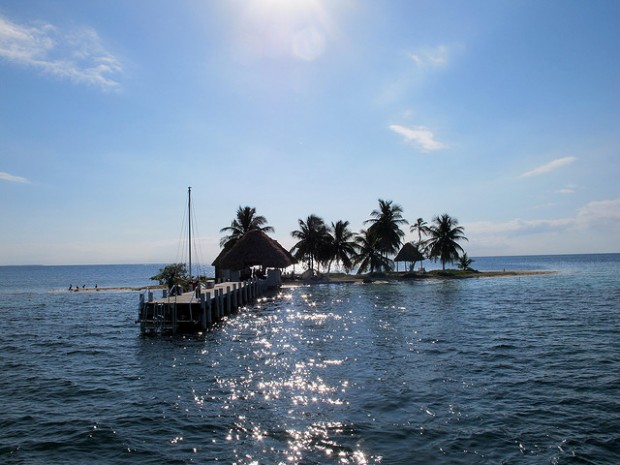
Belize’s Barrier Reef is lined with hundreds and hundreds of small islands, or cayes.
2. The Atolls
Belize’s three mid-ocean atolls are arguably more spectacular than the barrier reef and its many cayes. Unique formations of small islands and reef surrounding a mid-ocean saltwater lagoon, atolls are an isolated and stunning phenomena. Belize has three of them: Turneffe Island, Lighthouse Reef, and Glover’s Reef. These atolls are very sparsely developed, and any visit here will be imbued with a sense of adventure, isolation, and romance.

Turneffe Island, Belize, one of three spectacular mid-ocean atolls.
3. Crooked Tree Wildlife Sanctuary
Located in northern Belize, this preserve is a swampy lowland home to over 250 resident species of birds and serves as a resting spot for scores of migratory species, and the principal nesting site of the endangered jabiru stork, the largest bird in the Americas. The best way to explore Crooked Tree is by paddling around the network of lagoons in a dugout canoe.

Crooked Tree Wildlife Sanctuary is home to the endangered jabiru stork.
4. Actun Tunichil Muknal
Actun Tunichil Muknal is a cave in the Tapir Mountain Nature Reserve near San Ignacio. A sacred site for the Mayans, the cave contains many examples of pottery, ceramics, and stoneware, as well as several sets of human sacrificial remains, one of which (known as the “Crystal Maiden”) has been almost entirely covered in limestone crystals by the natural processes of the cave.

Inside this cave lies the remains of Mayan human sacrifices.
5. Ambergris Caye
The island is the top tourist destination in Belize, and is the largest of several hundred islands in the northernmost waters of Belize. Most people get around Ambergris Caye by simply walking. There are many quality hotels in town, and many resorts on the island are less than a mile from the town of San Pedro, the only urbanized area on the island.
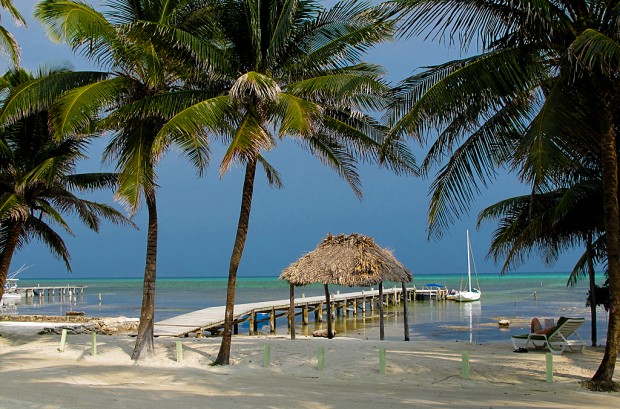
Ambergris Caye is the top tourist destination in Belize.
6. Caracol
Sitting high on the Vaca Plateau, 1650 ft. above sea level, Caracol is the largest Maya site in Belize. It was once one of the largest ancient Maya cities and at its peak around 650 AD it had an estimated population of about 150,000, more than twice as many people as Belize City has today. The largest pyramid in Caracol is Canaa or Sky Place, still the tallest man-made structure in all of Belize at 143 ft.

View from atop Vaca Plateau, Caracol, the largest Maya site in Belize.
7. Blue Hole
The Great Blue Hole is the most popular diving spot in Belize. This massive sinkhole under the water is near the Lighthouse Reef and creates a perfect circle of deep blue water. The deeper one dives into the Great Blue Hole, the clearer the water and the more breathtaking the scenery, as the array of bizarre stalactites and limestone formations become more complex and intense.
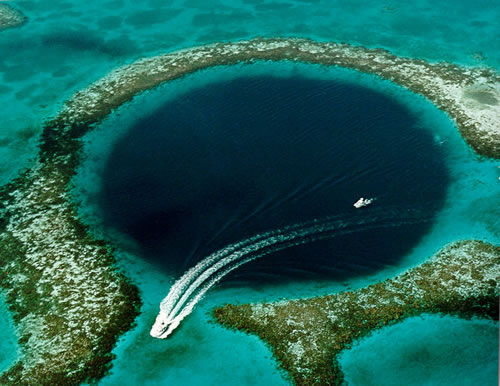
Blue Hole, Belize’s most popular diving spot.
8. Caves Branch River Tubing
Geologists recently discovered a vast subterranean network of Maya ceremonial caves. At the Nohoch Che’en Caves Branch Archaeological Reserve, guides will lead you across jungle pools to the caverns filled with artifacts like sacrificial skeletons. The spiritual underwater history lesson is a must-do.
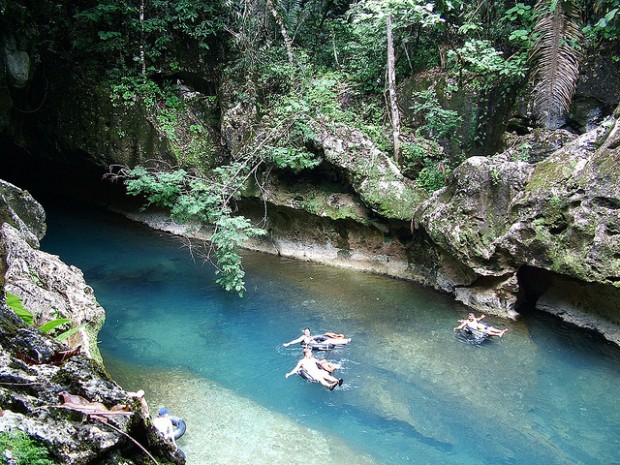
Belize caves plus tubing, equals a must-do.
9. Mennonites
In the 1950s some 3,000 Mennonites emigrated to Belize, where they established communities in the Orange Walk and Cayo districts. Today, there are an estimated 8,000 Mennonites in Belize. They are primarily located in farming areas and have no hotels or tourist facilities, but the unexpected sight, on dusty rural roads, of pale-skin folks in old-fashion dress—the women in long plaid dresses and the men with suspenders and straw hats—in horse-pulled buggies will remind you of how diverse Belizean culture really is.
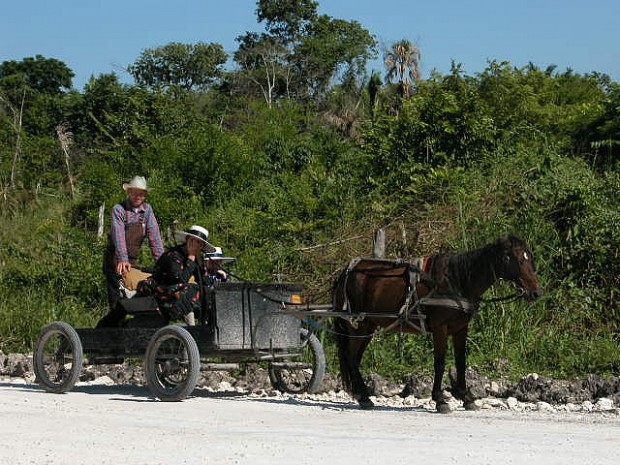
Belizean Mennonites embrace a simpler lifestyle.
10. Fly Fishing for Tarpon
The waters surrounding Ambergris Caye, Belize abound with fish and the island boasts some of the best fishing guides in the country. Tarpon are the largest, strongest, and most acrobatic of the Belize species. Even juvenile fish will put your angling skills to the test and strain your tackle beyond belief.
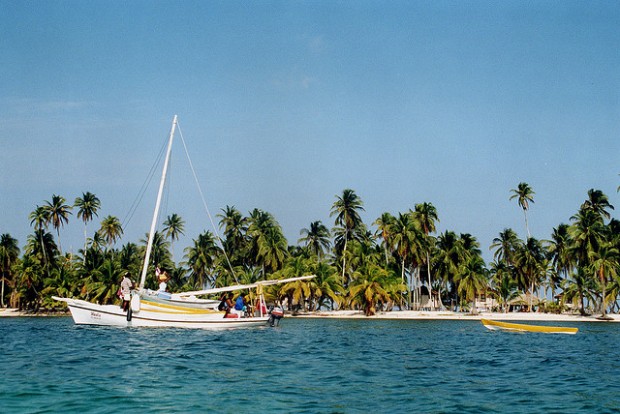
Belize offers up some of the best fishing spots in the Caribbean.
The Panama 3 Count, where we bring you 3 Panama stories that you shouldn’t miss.
1: Top 10 Retirement Havens for 2013…Part 1
What are the best, the most comfortable, the most affordable, the most convenient, and the most rewarding spots worldwide for retirement in 2013? Huffington Post says the winners are…
2: Financial Times: What’s Not to Like About Panama
The narrow nation of Panama will grow three times Latin America’s average of 3.1% this year, among the highest in the region; add in the canal expansion, what’s not to like?
3: The One Industry Which Pumped More Than $600 Billion into Latin America
According to the World Travel and Tourism Council, the travel and tourism sector made a direct investment of $666 billion into the economies of Latin America.
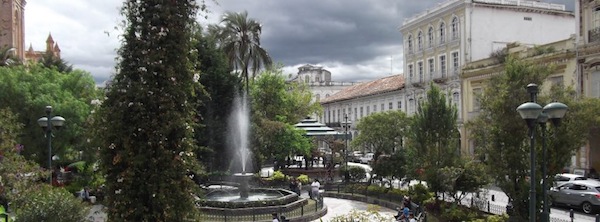
“Life should be better and richer and fuller for everyone, with opportunity for each according to ability or achievement” — Adam Truslow, coiner of “The American Dream”
So what does Cuenca, Ecuador have to do with The American Dream?
Short Answer: everything really associated with quality of life is more abundantly available in the very best cities of Latin America — with Cuenca, Ecuador a crown jewel among them — than in metro and suburban USA.
Cuenca, Latin America & The “Joy of Life Ratio”
Basically, it comes down to the Joy of Life Ratio.
You figure out the ratio by determining how many minutes out of every waking-hour in a typical day are spent:
- Doing what you love (or at least deeply enjoy) — amid beautiful and pleasant surroundings — in frustration-free and friendly environments — enhanced by beautiful weather
Versus how many minutes are spent
- Doing stuff you hate (or don’t want to do) — amidst clangorous, urban ugliness and/or soul-sucking suburban blandness — in an over-busy and time-crunched and grouchy atmosphere — made worse by inclimate weather
 Sure, the US has plenty of opportunity to pursue your passion, more than its share of beautiful cityscapes, and no small amount of lovely weather… But — and this is a giant BUT — the communities with the best mix of those things are now priced out of reach for for most Americans.
Sure, the US has plenty of opportunity to pursue your passion, more than its share of beautiful cityscapes, and no small amount of lovely weather… But — and this is a giant BUT — the communities with the best mix of those things are now priced out of reach for for most Americans.
And even staying afloat in a simply “nice” city can start to take up all of your time and energy in order to pay the bills and have enough left over for a few evenings out, leaving many Americans to wonder if there isn’t a better option out there somewhere.
Many of them are now finding that better option in the best cities of Latin America, with Cuenca, Ecuador chief among them. That’s where they find much higher Joy of Life Ratios at prices the average American can thrive in.
Of course, which Latin American city and country offers YOU the best Joy of Life Ratio depends on:
- what your passions are (if your passions are sailing, surfing and scuba diving, Cuenca won’t be for you),
- what you, particularly, find the most beautiful and pleasant, and
- what your priorities are, in terms of amenities, city life vs. country life, and so on.
Cuenca Ecuador is the city of choice for those people who’d dream of living smack in the middle of Paris, Barcelona, or Sienna (or even Manhattan or San Francisco, for that matter) within walking distance of historical, beautiful architecture, culture, and food — at a price that’s affordable for someone needing more living space than a studio apartment.
In fact when Ecuadorians live overseas, whether in the US or Europe, they typically return to Cuenca, Ecaudor and purchase real estate. Regardless of where they grew up in Ecuador, when they come back, they tend to settle in the city of Cuenca. And this is for a mix of reasons, which I’ll call…
The Big Three Pros of Cuenca, Ecuador:
1. Cuenca’s Old World Character and Ideal Climate
When more and more American cities and suburbs look like they were designed at corporate, Cuenca looks like something out of Europe with its gorgeous architecture, historic buildings, scenic public squares and parks, and tons of authentic character.
Just look at these pictures!
And for nature lovers, Cuenca sits at the cross-roads, so to speak of four major rivers and is surrounded by mountains, as it lies on the Ande’s mountain range. Most state parks are less beautiful than the cities average walking trail.
And outdoor beauty is important because the weather will make you want to be outside — with year round temperatures averaging in the mid-70s Fahrenheit, getting just cool enough in the evenings for a light sweater or jacket.
And all this in a city of only 500,000 people — about 100,000 people smaller than Portland, Oregon.
See a nice drone video of Cuenca despite the hilarious music.
2. Cuenca As a Welcoming, American-Friendly, Metropolitan City
As mentioned earlier, many Ecuadorians who have spent some time working, studying or living in the US, settle back in Cuenca when they come back to Ecuador.
That means the people in Cuenca like and are welcoming of Americans and happy to help make them part of the community. Many are fluent in English and the city has plenty of English-language bookstores, store owners, and people willing to accommodate non-Spanish speaking travelers and expats.
Overall Cuenca has a very metropolitan feel, alive with talents, dollars, and taste for life that these well-traveled and well-educated Ecuadorians and expats bring to it. Think of Cuenca as a combination of:

- Hip arts community — free symphonies, a mecca for painters and sculptors, and artisans
- College town — no less than 8 universities, and
- Tom-Sawyer-esque hometown — very family oriented with excellent schools, community involvement, safe environment.
Now think of all that rolled into a place that’s very reasonable and affordable to live.
For around $150,000 to $200,000 USD you can get a home within an easy walk of the city’s historic district, or Centro and be able to enjoy the city in a way that’s simply impossible with a US City when you’re forced into a suburb some 30 to 60 minutes away from the hart of downtown. Think of it like living near downtown Austin, or the Garden District of New Orleans, or near the Santa Monica pier — except at a price you can effort and without most of the hassles that come with living in a major metropolitan area.
Simply put, life is simpler and more enjoyable when you can walk everywhere you need to go and the walk is as beautiful and pleasant as one enjoys when strolling through historic Cuenca.
Click to learn more about real estate, cost of living, healthcare, & residency in Cuenca
Along with the beauty and cultural offerings comes all the other amenities you’d expect to find in any first rate city: an active night life, first-rate restaurants, shopping malls (if you want them), luxury boutiques, readily available high-speed internet access, and ease of travel, with an airport offering easy travel.
3. Low Cost of Living Coupled w/ Excellent Schools, Food, and Health Care
 We’ve already mentioned housing costs in Cuenca — they are affordably low, with luxury, furnished rentals running around $650 a month.
We’ve already mentioned housing costs in Cuenca — they are affordably low, with luxury, furnished rentals running around $650 a month.
Factor in utilities, condo fees, cable, and everything else and you’re looking in the neighborhood of $900 a month — again for a furnished, luxury apartment in a desirable location. And the same goes for most anything else — eating out at a first-rate restaurant for two runs about $30. Buying groceries with plenty of grass-fed beaf, fresh seafood and veggies will run you about $250 a month — or about $60 a trip to the market.
And if you’d rather go to a supermarket than a farmers market — don’t ask me why you would but… as the Ecuador’s agricultural and tourism industries, Cuenca has plenty of supermarkets and malls.
Along with the lower cost of living comes the higher quality of life for families and retirees. Not only does Cuenca have an abundance of Universities, including University courses in spanish for expats, but the local schools are excellent and the community places a very high value on education in general.
Many people who move to Cuenca retire there, but if you’re moving your family there, you can rest assured that your kids will receive a first-class education without worry of payment for private schools.
And this low-cost for premium living extends right through to inexpensive, high quality health care, available at 18 hospitals and medical centers in the city, many of which are home to a large number of English-speaking doctors — something extremely important to both retirees and families!
Cuenca, Ecuador’s Short List of Negatives
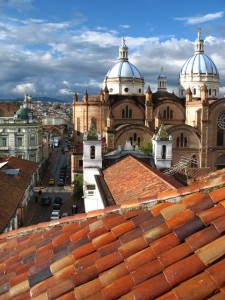
So why might you decide NOT to move to Cuenca?
Well, the negatives are tightly related to many of the positives. In other words, many looking to move to Latin America like Cuenca because it’s both English language-friendly, already popular with and home to a growing community of expats, and has established industries around welcoming US expats into the community.
And all of that is great… unless you’d rather NOT join a crowd of expats, or would rather move to a city BEFORE it becomes “the next big thing,” or if you’ve already mastered Spanish and don’t care about English-language friendliness.
Also, if you’re idea of paradise includes beaches and water sports rather than mountain living, Cuenca, Ecuador isn’t your town. Ecuador has coastal towns, but Cuenca isn’t one of them.
Finally, if you’re primary consideration is how far your dollar will stretch, Cuenca may be less expensive than North America, but it’s certainly not the cheapest place to live in Latin America, and you can be sure that the steady stream of expats are only going to drive housing and rental prices up.
Comparing Cuenca, Ecuador to Your Other Latin American Options

If you ARE looking for a more tropical or Caribbean flavor to your retirement location, take a closer look at coastal Panama and Belize.
If you like Cuenca, but want something a bit pre-trend, consider looking into Medellin, Columbia and Mendoza, Argentina.

Panama is a smart choice for expats who want it all—in a country that really wants them. Located in the interior of Panama, Boquete is popular with the expat crowd, who enjoy a close proximity to pristine beaches and the growing city of David, along with expansive mountain views, and an affordable cost of living.
Here are five good reasons you will want to become an expat in Boquete.
1. Panama’s Friendly Retiree Residency Program
Most notably, Panama lures expats with one of the world’s best retiree residency programs. The Pensionado or Pensioners’ Program makes it easy for retirees to get residency here. The potential value for a pensioner on a budget is huge, as Panama offers a host of discounts to all its retirees. The long list of discounts includes reduced fares on movies, theaters, sporting events and other public events; discounts off transportation, hotels, even electric and other utilities, and much more.
Legal and application fees for the Pensionado visa are relatively inexpensive, particularly when compared to the money-saving benefits. Plus, the Pensionado program awards residency for life.
2. Panama is a Top-Rated Retirement Destination
Boquete is known for its expat community. Rated by the AARP as one of the world’s best retirement destinations, Boquete first began to attract an expat crowd in early 2001 and has continued to grow into a viable expat community. An hour’s flight from the nation’s capital of Panama City, Boquete is dotted with small cottages, one after another… Swiss-style cabins with magenta and coral bougainvillea spilling over their walls. No wonder Boquete is known as Panama’s flower capital.
3. Boquete Offers Stress-Free Living
Expats in Boquete will tell you their health has improved… not because they’ve done anything special, but because the place lends itself to healthy living. It’s easier to walk here than to drive. Everything is close and everyone is on foot.
There aren’t fast-food joints on every corner. But the market carries fresh ahi-grade tuna and sea bass and shrimp every day. And they’re a mere fraction of the price you’d pay back home. Baked with juicy tomatoes or slices of fat Boquete oranges, dinner for four will run you about $10.
You’ll meet painters and photographers and jewelry-makers here. The expat community has helped infuse Boquete with the arts. This quiet village now has a yearly jazz festival and an English-language theater troupe.
4. Take Up an Outdoor Activity
There’s much to do for lovers of the great outdoors, too. Boquete is the kind of place where you can go white-water rafting or hiking or birding…every day. You can have your own farm and livestock… grow rare orchids and bromeliads… pick limes and bananas from your very own trees. The land is rich and fertile, the climate is perfect. You can can even bird watch from the comfort of your home.
True, Boquete is known for its misty rain— called bajareque—as much as for its coffee and orchids. You can’t have one without the other. During the rainy season, from May through November, there will be afternoon showers… or downpours. But you see the sun most every morning.

Miniature humming birds of Boquete
5. The Cost of Living Is Low in Boquete
Panama ranked 8th on The Worldwide Cost of Living Survey, which is released twice a year by the EIU and compares hundreds of prices across 160 products and services, including items such as food, drink, rentals, utility bills, schooling costs, and household supplies. If you decide to buy a home in Panama, it is possible to live well, on less. Just be forewarned, if you bring along a lavish U.S. lifestyle to Boquete, your cost of living might be higher than you might expect. However, if you are willing to eat like a local, you can dine out for $4, get a glass of wine for $3, and enjoy an abundance of fresh fruits and vegetables for $10 a week.
Here, paradise comes at a price…but it’s a bit more economical.
Sandwiched between Nicaragua and Colombia, between the Caribbean Sea and the Pacific Ocean, Panama and Costa Rica certainly have a lot in common. Situated in the heart of Central America, these two small nations are both rich in culture and scenic beauty, making them wildly popular tourist destinations, attracting people from all over the world each year.
Then what is it that makes Panama City, according to America Economia, a prime business location over San Jose, Costa Rica? While both cities were ranked relatively high on the list of “Best Cities for Business in Latin America”, with Panama ranking seventh, and San Jose twelfth, what exactly was it that allowed Panama City to jump those five extra spots?
What makes Panama so prime?
The answer lies in Panama’s economy, an economy prime for foreign businesses. Along with the fact that Panama has been a dollarized country for over 100 years, instantly making foreign investors feel more comfortable, Panama also has specific laws put in place to protect foreign investments.
A businessman himself, current President Ricardo Martinelli is behind many of the laws promoting foreign business and trade that have made Panama, economically, the fastest growing country in the Western Hemisphere.
Conducting business in another country can be a daunting task simply because you are working in a place with a different economic climate than your own. Yet while many countries tend to put up barriers, Panama has been working to demolish them. In Panama, foreign entrepreneurs are not only welcomed, but encouraged to purchase or open new businesses, and due to dollarization, Panama’s stable banking sector and USA-Panama free trade, foreign business owners will be more inclined to do so.
Panama has many advantages that make foreign businesses run exceptionally smooth. The Panama Canal, a 48 mile ship canal that connects the Atlantic Ocean to the Pacific Ocean, plays a vital role in regards to trade and global influx by allowing goods to be imported and exported at a significantly faster rate.
 Near the Panama Canal entrance is the Panama Pacifico, a 1,400 hectare business ‘park’ built on what was once the United States Howard Air Force Base. Any business built within the park will be free from income taxes, import duties, real estate taxes, remittance tax, international calling tax, and dividend tax, making it an ideal spot.
Near the Panama Canal entrance is the Panama Pacifico, a 1,400 hectare business ‘park’ built on what was once the United States Howard Air Force Base. Any business built within the park will be free from income taxes, import duties, real estate taxes, remittance tax, international calling tax, and dividend tax, making it an ideal spot.
Like Panama, Costa Rica’s official language is Spanish and much of their national revenue is fueled from trade and tourism. Unlike Panama, the national currency in Costa Rica is the colone, which gives Panama an immediate edge when it comes to conducting foreign business. Ranked twelfth on the list, which is still very respectable, the main reason Costa Rica fell short to its neighbor is because of its inaccessibility to foreign business in comparison.
Why not Costa Rica?
While Panama welcomes foreign business with open arms, Costa Rica tends to keep them at arm’s length. According to the Small Business Administration in the United States, only half of all businesses will survive five years. Unfortunately in Costa Rica, the success rate is even lower. Why exactly is this?
- Acquiring permanent residency in Costa Rica is difficult. In Costa Rica, unless your planned business is going to require more than $200,000 in capital investment, you won’t be getting residency. You, like most foreigners living in Costa Rica, will have to remain a “tourist” and leave the country periodically every 30 to 90 days to renew your visa. Of course to many, it is a small price to pay to reside in such a beautiful country.
- Starting a business in Costa Rica will be expensive and a little tedious. Gathering all of the necessary paperwork and permits together will take 160 days and will cost more than the average annual income.
- Once the business is established, it will also be expensive to run. As a direct result of the nation’s small population, and with no Panama Canal, foreign business owners can be expected to pay premium on things like imported foods, construction supplies, and technology as they are transported through the mountains.
At number seven and twelve on a list of forty-six cities, both Panama and Costa Rica have exceptional business climates for those considering opening a business in a breathtaking tropical environment. With thousands of tourists flocking to these cities each year to enjoy the luscious landscapes, exciting wildlife and Latin American culture, either city, according to America Economia, would be considered a wise selection. Yet between the two, Panama comes out on top. A dollarized country with a business-savvy President and laws tailored to promote foreign business and trade, Panama City is awarded the title of city with the best business climate.
FATCA, or the Foreign Account Tax Compliance Act, was enacted in 2010 and has been in effect since January 2013. This Act was passed with good intentions: to target those who evade tax in the U.S. by not disclosing their offshore accounts to the IRS. That’s good, I thought, people must pay taxes or suffer the consequences.
And then I read on. The key provisions of FATCA force all global financial companies to report the details of U.S. account holders with more than $50,000 to the Internal Revenue Service (IRS), the U.S. tax authority. This is because the U.S. is one of the only countries to tax their citizens on their worldly income.
What does FATCA mean?
It means that Foreign Financial Institutes (FFIs) must act as pro bono tax collectors for the IRS, or suffer hefty penalties. It goes on to state that if a U.S. citizen refuses to give out these details then the FFI’s must impose a 30% tax on all payments/transfers associated with the account.
So already, if you’re an FFI, you can start to feel a little twitchy about dealing with FATCA. So what if all FFIs just ignore the whole thing? This Act seems to have thought of everything (but the prejudice it is creating!) and goes on to say that if an FFI doesn’t register with the IRS and comply with these provisions of reporting and taxing, that the FFI itself will be charged with 30% Withholding Tax.
World economics
It is (conservatively) estimated that FATCA will have an initial worldly cost of $10 billion, with the cost to a large global bank (like HSBC, for instance) staggering at $100 million. This looked at in the broader scheme of things where the IRS itself has estimated that FATCA will bring in less than a billion dollars in revenue.
It’s only natural that small FFIs are trying to exclude U.S. citizens from banking with them, while the larger banks are dealing with the logistical nightmare with deciding what constitutes a U.S./non-U.S. investor, and sharing that information about their investors to all international branches.
Legally speaking
Let’s talk about the legalities of it. FATCA itself, a U.S. piece of legislation, conflicts with the laws of other countries. In some countries the sharing of personal details (as required by FATCA) is illegal for a company to do. Companies who do not want to break the law may not be able to comply with FATCA, and will therefore be charged a Withholding Tax for being a legally abiding entity.
And this even if you are dealing with Non-U.S. transactions between Non-U.S. businesses not in the U.S., you must still conform to U.S. legislation. How is that logical? Simply, it’s not.
Another outcome from the Act could lead to U.S. taxes being imposed on international transactions. The International Swaps and Derivatives Association put it like this:
The pass-thru payment rules could potentially impose US withholding tax on an interest made by a British bank’s London office to a German bank’s Frankfurt office if the German bank is a non-participating FFI and the British bank is a participating FFI, providing the British bank holds any US assets in any of its global offices.
Such a transaction would require the British bank to withhold a 30% tax on the exchange.
There are lots of knitty-gritty, investor-jargon details on this, if you’d like to find out more: http://americansabroad.org/issues/fatca/fatca-is-bad-for-america-why-it-should-be-repealed/
This sort of legislation needs to be repealed. But that can only happen if we all stand up and say ‘what the FAC!’
Stay tuned.












